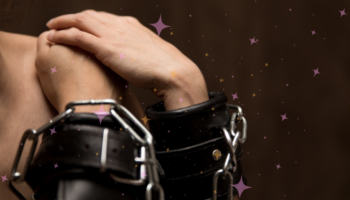A Prince Albert is a male genital piercing. This ring-style piercing generally extends along the underside of the glans, from the opening of the urethra to the frenulum. It may be off-center, if the wearer is uncircumsized, or if they wish to avoid contact with the bundle of nerves around the frenulum.
In the 1970s, body piercer Doug Malloy claimed that the Prince Albert originated in Victorian times, when men used tight pants to secure their genitals to the left or right to minimize their appearance. He claimed Prince Albert wore a similar piercing to keep his foreskin retracted and prevent odors that might offend the Queen, but his assertions have been disputed by historians.
The Prince Albert became popular within the gay community in the early 1970s before spreading to the mainstream. Today it is one of the most common male piercings.
A Prince Albert is also known by the acronym PA.
More About Prince Albert
Many fans of the Prince Albert insist that it makes sex feel better for both partners. In heterosexual sex, the piercing may help stimulate the G-spot in some sexual positions, such as doggy-style. The pierced man may find his Prince Albert stimulates his urethra, which some say is as sensitive as the glans penis.
However, some non-pierced people report discomfort during intercourse with those who are piereced, especially women who may feel pain if the piercing comes in contact with their cervix. There is also a risk of chipped teeth and choking when performing oral sex on a man with a Prince Albert.
It takes between four weeks and six months for a Prince Albert to heal. During this time bleeding, inflammation, and swelling are common side effects. In some cases, localized infections may occur. It can also take practice to control the dribbling that may occur during urination.
Sex should be avoided for the first week after piercing. Following this, sexual activity should be performed with care until the piercing is completely healed. Condoms are also recommended for the extent of the healing period.
As with all piercings, there is a small risk that a Prince Albert may become caught on clothing. Large, heavy rings may also cause thinning of the tissue between the opening of the urethra and the healed fistula. Tears may also occur with thin rings, but these can be corrected surgically.
There is a female variation of the piercing, known as the Reverse Prince Albert or Princess Albertina, in which the ring enters through the body through the woman's urethra and exits through a hole pierced in the top of her glans.



